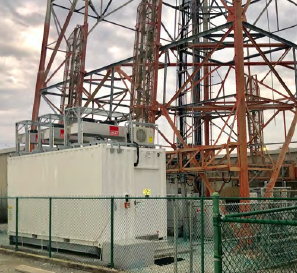
Is “The Last Mile” a Problem or Innovation Catalyst?
Feeling a little “on edge” as you’re trying to address your last mile problem? Well then, your head might be in exactly the right place. Forgive the wordplay, but the point is that what has traditionally been considered a problem – last mile latency created when gigabyte-speed fiber branches off to twisted copper pairs or some other slower medium – may spur application innovation and improved core-to-edge network performance.
It’s a fact that blazingly fast network performance is viewed as a major indicator of high quality of service and user experience. When remote employees, business partners and customers find themselves waiting even a matter of seconds for query responses or data updates or extended periods for application downloads, they get grumpy. When gaming, streaming or web-surfing customers find themselves dealing with anything less than real-time, seamless interactions, they think about switching to other network providers or application vendors.
The “last mile” refers to the gap between a broadband internet service provider’s infrastructure and a customer’s home or workplace. It’s often considered the most important part of customer experience management.1
So, for those who work, live and play on the edges of enterprises, disappointing network performance may rightly be considered a problem. But for developers working upstream on new applications, that perceived problem can often be just the spark needed to create and implement new, faster and more reliable capabilities.
When a Problem is an Inspiration
Run a search on “the last mile” and you’ll get pages and pages of results discussing the problem. To slightly reword a well-worn expression, problems can be the mother of innovation. In the case of the last mile, this problem is inspiring developers to exploit existing technologies in new ways and to develop technologies that cut latency and architectures delivering new capabilities as well as more content-rich experiences.
The last mile isn’t really so much a problem as it is an enabler. Lots of IT professionals are trying to solve for it, whether to make it possible to push more data and compute power more quickly to users out on the edge or to inspire the development and implementation of new applications that can serve humanity better. As last mile infrastructure evolves, it serves as a catalyst for more innovative thinking and development.
These capabilities and experiences include such things as:
- Providing remote workers access to the applications, data and other resources they require to work as effectively as if they are located in central offices and directly connected to company servers – a consistent experience
- Enabling telehealth for medical professionals, so they can consult via video with patients and colleagues anywhere in the world, and even perform long distance robotic surgery that requires extremely high-quality optics, virtually zero network latency and absolute reliability
- Delivering ever-more riveting, complex, rapid-action and multi-user mobile games that make remote players feel as though they really are all in the same room
- Enabling interactive distance learning for students “attending class” from home either because of health safety requirements or that they happen to live in rural or otherwise underserved locations
Last Mile Solutions
In pre-fiber days, last mile connectivity was little more than copper wire that ran from relatively nearby telecom switching offices to local businesses and residences. It was very easy to diagram, but incapable of carrying huge volumes of digital information at high velocity between local telecom facilities and edge-based users and their devices. The advent of early cellular communication and cable TV installations were steps forward, but they didn’t provide nearly the high capacity, low latency service levels required to enable the types of 21st century use cases previously described.
At that time, there was no collaboration or coordination between these typically separately owned and operated service providers, which made solving for the last mile even messier. What’s needed to enable the continued increase of high-speed data traffic and rollout of new, feature rich, applications and services is the collaboration of multiple stakeholders including…
- data center operators
- colocation providers
- wireline and wireless carriers and infrastructure providers, and
- effortless, anywhere, native access to cloud service providers’ ecosystems
…each with defined roles, partnering to deliver the full spectrum of digital capabilities and experiences customers expect now and in the future.
The Last Mile Hits Home For Yours Truly
I’ve struggled with my own last mile issues. Living in the suburbs of the Santa Cruz mountains, over time I’ve gone from 56kbps to a 1Gbps cable internet service. But even that isn’t fast enough to support my work architecting cloud connectivity. Now, a new carrier is offering 5Gbps speeds via an upgraded fiber infrastructure at a price point lower than my current national cable operator. And I’m sure you’ve seen the promotions from one national internet service provider that’s now offering 10Gbps speeds to the home. I’m looking forward to getting that 10Gbps service soon, but I expect that will not be the last evolution in speed. I’m confident that the future holds even faster and more affordable offerings, which will make the last mile much less of an issue.
Innovation Leads to New Challenges, Spurring More Innovation and More Challenges

Still, the truth is that there will never be a single, once-and-for-all solution to last mile requirements. That’s because each new infrastructure enhancement will inspire developers to think of new ways to utilize those enhancements to further enrich end user experiences and make the overall digital universe more efficient, reliable, secure and most important, useful.
What’s emerging is an edge-to-core interconnected fabric that is continuously evolving to support the development of better, even currently unthinkable applications that could improve quality of life for everyone.
Some of it is visible. Wireless towers are built, with edge data centers constructed alongside those towers, giving people with 5G-enabled cell phones access to ingenious, entertaining and even life-saving apps.
Other infrastructure enhancements, such as the convergence and interoperability of wireline and wireless networks, may be less visible but are no less essential to creating new business opportunities, improvements in business processes and leaps in productivity.
Additionally, automation and virtualization of network functionality (NFV) will help data center providers and carriers meet the need for drastically increased network flexibility, sustainability and performance. Integrating AI and ML models into the edge and regional data centers also will help improve and optimize 5G performance management, with intent-based networking solutions added to measure and validate outcomes against business objectives.2
Know More
There’s a lot more to think about and consider regarding the last mile problem or opportunity (however you choose to view it). That’s why we’ve published a white paper – Accelerating Wireless-Wireline Convergence: Enabling the Metaverse, Omniverse and Future Digital Infrastructure – that discusses this in much greater detail. You can find it in our Resources Library.










